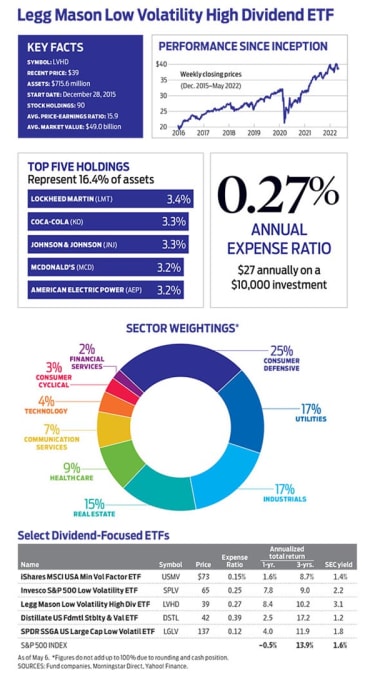ETFs
Low-volatility funds like the Legg Mason Low Volatility High Dividend ETF have held up well during this year’s market turbulence.Low-volatility funds, which aim to offer a smoother ride, are living up to their name.
Since the start of the year, U.S. stock funds with low-volatility strategies have dipped 7.7% on average, while the S&P 500 Index has lost 13.1%. The Legg Mason Low Volatility High Dividend ETF (LVHD) has held up better than both, with a 2.2% loss.
The fund is flourishing in an economic environment of higher inflation and rising interest rates. It tracks an index that favors high-quality firms with above-average dividend yields that have steady and ample profits to sustain payouts, as well as low share-price volatility.
“We want to be boring and find mature companies with predictable earnings,” says Michael LaBella, a senior portfolio manager for fund sponsor Franklin Templeton Investment Solutions.
The portfolio tilts toward utilities, consumer staples and real estate stocks. But no sector can make up more than 25% of assets. And the fund’s sector preferences can shift. Lockheed Martin (LMT), Coca-Cola (KO) and Johnson & Johnson (JNJ) are among the fund’s biggest holdings.
Don’t expect low-volatility funds to outperform every market correction. These funds lagged the S&P 500 in 2020, for instance. The Legg Mason Low Volatility High Dividend struggled because it shuns firms that lack earnings and dividends, and thus it didn’t own the growthy, pandemic-themed stocks – think Zoom (ZM) – that were rewarded that year.
The ETF’s 10.2% annualized three-year return lagged the S&P 500’s, but over that time, the fund was 5% less volatile. It boasts a 3.06% dividend yield.
